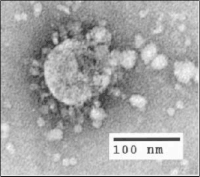
Photo from wikipedia
Molecular docking produces often lackluster results in real-life virtual screening assays that aim to discover novel drug candidates or hit compounds. The problem lies in the inability of the default… Click to show full abstract
Molecular docking produces often lackluster results in real-life virtual screening assays that aim to discover novel drug candidates or hit compounds. The problem lies in the inability of the default docking scoring to properly estimate the Gibbs free energy of binding, which impairs the recognition of the best binding poses and the separation of active ligands from inactive compounds. Negative image-based rescoring (R-NiB) provides both effective and efficient way for re-ranking the outputted flexible docking poses to improve the virtual screening yield. Importantly, R-NiB has been shown to work with multiple genuine drug targets and six popular docking algorithms using demanding benchmark test sets. The effectiveness of the R-NiB methodology relies on the shape/electrostatics similarity between the target protein's ligand-binding cavity and the docked ligand poses. In this chapter, the R-NiB method is described with practical usability in mind.
Journal Title: Methods in molecular biology
Year Published: 2021
Link to full text (if available)
Share on Social Media: Sign Up to like & get
recommendations!